For 9/11 first responders, time will never heal all wounds
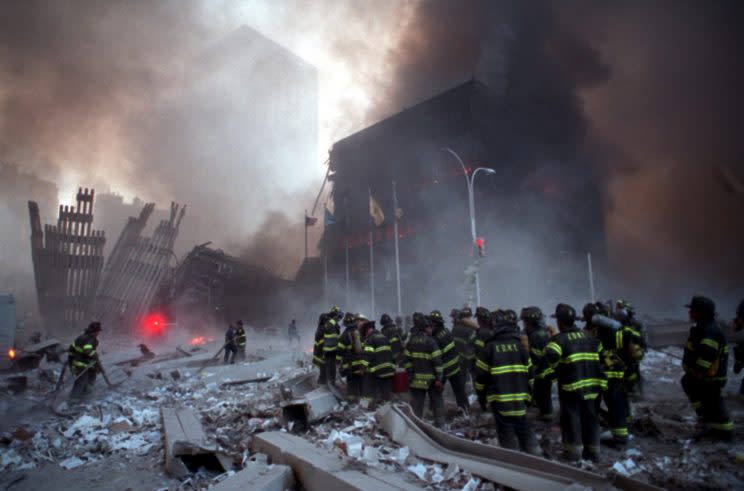
Two days before the 15th anniversary of 9/11, Jake Lemonda, a New York City Fire Dept. battalion chief and president of the Uniformed Fire Officers Association, took a moment to discuss the ongoing suffering of the first responders fighting critical illnesses that stem from the lethal mix of toxins they inhaled at Ground Zero.
The firefighting community lost 343 people on Sept. 11, 2001, and 127 more firefighters have died from 9/11-related illnesses — including 17 since last year, according to the association.
“For all of us that responded — there’s a saying, ‘Time heals all wounds’ — there’s not enough time. You take off the bandage and the wounds are raw, especially in the days leading up to the day and on that day itself,” Lemonda said at the association’s office in downtown Manhattan Friday.
“I have a great executive board and we reach out to our membership who are sick or ill. And some of them are dying, to be very honest with you,” he said.
On Sunday, it will have been 15 years since 19 al-Qaida terrorists hijacked four American airplanes. They crashed two into the World Trade Center Twin Towers in New York and one into the Pentagon building in Arlington County, Va. The fourth plane had initially been steered toward Washington, D.C., but crashed in a field outside Shanksville, Pa.
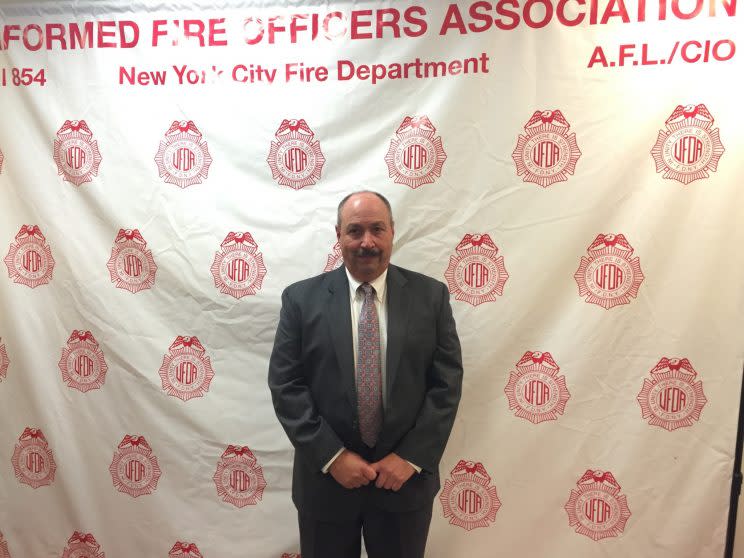
The 9/11 attacks were the deadliest to occur on U.S. soil. The terrorists killed 2,996 people, including 23 NYPD officers and 47 Port Authority officers. Thousands more were wounded.
“The toll continues to mount for us,” Lemonda said.
To date, roughly two-thirds of all FDNY first responders have at least one Ground Zero-related health condition — that’s more than 10,000 firefighters. He said over 1,300 members have come down with a form of cancer, nearly 3,800 have gastrointestinal conditions, roughly 5,000 have lower airway ailments and about 5,000 have upper airway illnesses.
“There’s not one member of our union, of this department, that we have reached out to that ever said they regretted responding down there,” Lemonda, who worked at Ground Zero after 9/11, continued. “Even though they have these terrible illnesses, they all said the same thing: They would do it all over again.”
In December, Congress voted overwhelmingly in favor of extending the James Zadroga 9/11 Health and Compensation Reauthorization Act, which provides health monitoring and treatment for first responders, for 75 years.
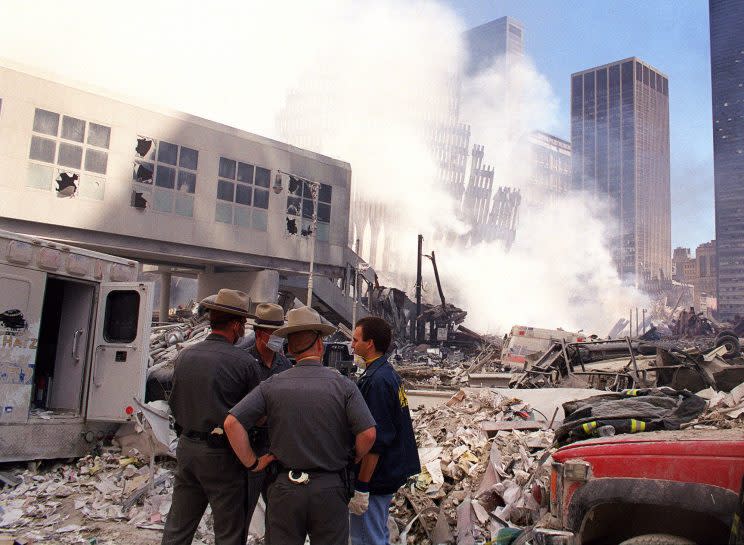
James Zadroga was an NYC police officer who died of a respiratory disease in 2006. He had spent hundreds of hours working in the recovery efforts at Ground Zero. The bill bearing his name was a milestone for recognizing the link between 9/11 and certain ailments and providing appropriate coverage.
At the press conference, Yahoo News asked Lemonda what his group’s next step would be to ensure that all 9/11 first responders get treatment.
“Our big concern right now it that we’re seeing a lot of illnesses that are coming to light and we want to get these included in the Zadroga Act,” he said. “We need documentation so we can point to medical evidence that [shows] we can make the connection between the events of that day and these illnesses.”
In September 2015, for instance, the WTC Health Program’s administration received a petition to add the autoimmune disease multiple sclerosis to the list of Ground Zero-associated health conditions.
Capt. George Farinacci, financial secretary of the UFOA, was active in urging Congress to reauthorize the Zadroga Act. The association organized many bus trips to Washington to illustrate the importance of the legislation.
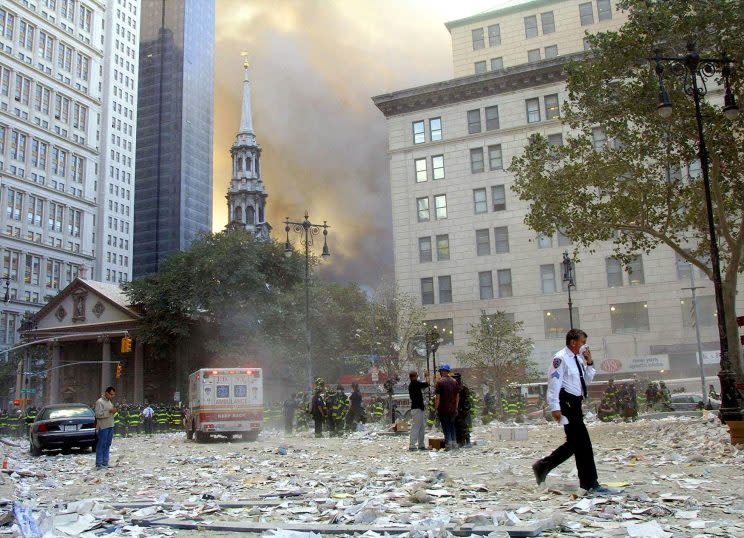
“What we don’t know right now is exactly how many new illnesses we may find,” he told Yahoo News. “There can be stuff that’s in the pipeline … that they’ve been noticing a rise in — unnatural incidents of this illness with this population. When it gets to a certain number they can say, ‘OK, this is definitely related. This is not natural.’”
Both said the organization is “forever indebted” to the politicians who supported them and the retired firefighters battling illnesses who made the trip — sometimes in-between chemotherapy treatments. He also thanked former “Daily Show” host Jon Stewart for drawing attention to their cause.
And not all 9/11-related illnesses were developed at Ground Zero.
Retired NYPD detective Al Meller, 57, who at the time lived in Commack, N.Y., 46 miles outside Manhattan on Long Island, went to the site of the terrorist attack several times but spent the bulk of his time in the aftermath of 9/11 at the NYC Office of Chief Medical Examiner.
He suffers from respiratory issues, neuropathy and post-traumatic stress disorder from his 60 days in triage. He said his ailments did not set in for three years.
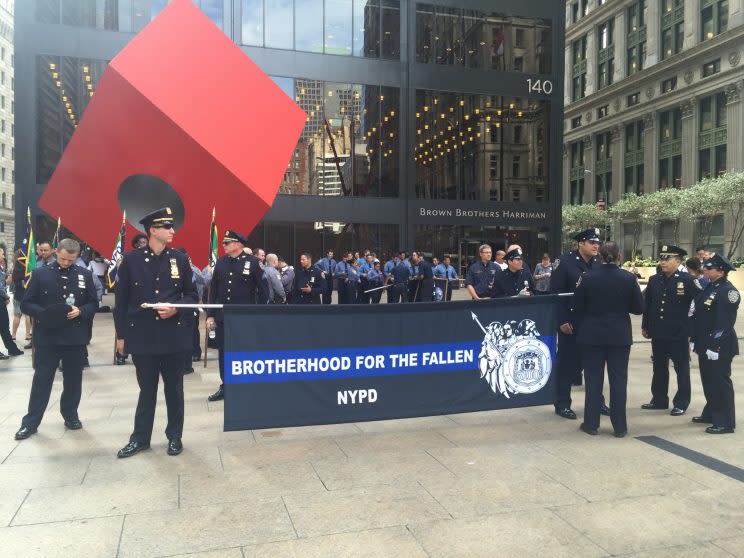
Meller was responsible for looking at the remains of the victims to see if there was anything that could help lead to a positive identification.
“I must have opened 6,000 body bags,” he said in an interview with Yahoo News. “The thing that I can share with you that people should know is that every remain recovered was treated with the utmost respect.”
The city’s chief medical examiner provided the operational statistics for the World Trade Center from September 2016. To date, of the 2,753 victims, 60 percent (1,640) have been identified and 40 percent (1,113) have not.
“In 2001, the Office of Chief Medical Examiner committed to the longterm work of identifying the victims of the World Trade Center disaster. The effort is ongoing, and we will continue the work in order to provide all the answers we possibly can to the families of victims,” New York City Chief Medical Examiner Barbara Sampson said in a statement to Yahoo News.
Retired New York Police Sgt. Peter Walsh, who lived on Staten Island at the time, has not been affected with a 9/11 illness. [Disclosure: Walsh is a relative of the writer of this article.] He said that working to bring closure to the victims’ families was a true team effort that spanned many departments and beyond. It involved NYPD detectives, Port Authority officers, FDNY fire marshals, state troopers, dentists and many others.
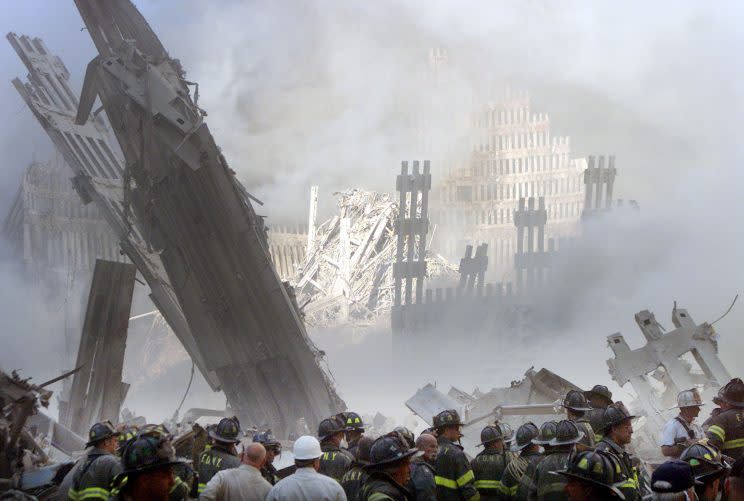
“It was very frustrating at that time to be in law enforcement and have this happen in your city and not [be] able to do anything. What could we do? How could we help? And how we helped was to help people get closure on it,” he told Yahoo News. “I was working six days a week, 12 hours a day for months. That’s what you did. That’s what everybody did.”
When someone was reported missing, he explained, his or her family would receive a seven-page questionnaire asking for the birthday, body markings, wedding anniversary, name of spouse and anything else that might help lead to an identification. Sometimes, for instance, they would find hands with wedding bands bearing inscriptions with wedding dates.
When asked if it was emotionally difficult to handle, Walsh replied, “I think it would’ve been a lot worse to sit around in a detective office and not do anything. Pretty much everyone was of the same mind. … Well, at least we’re doing something.”
_____
Related slideshows:
Slideshow: 9/11: Then and now – 15 years later >>>
Slideshow: Remembering 9/11 >>>
Slideshow: Tribute in Light >>>
Slideshow: World reactions to the 9/11 attacks – A look back >>>
Slideshow: How the 9/11 attacks were reported on front pages around the world >>>


